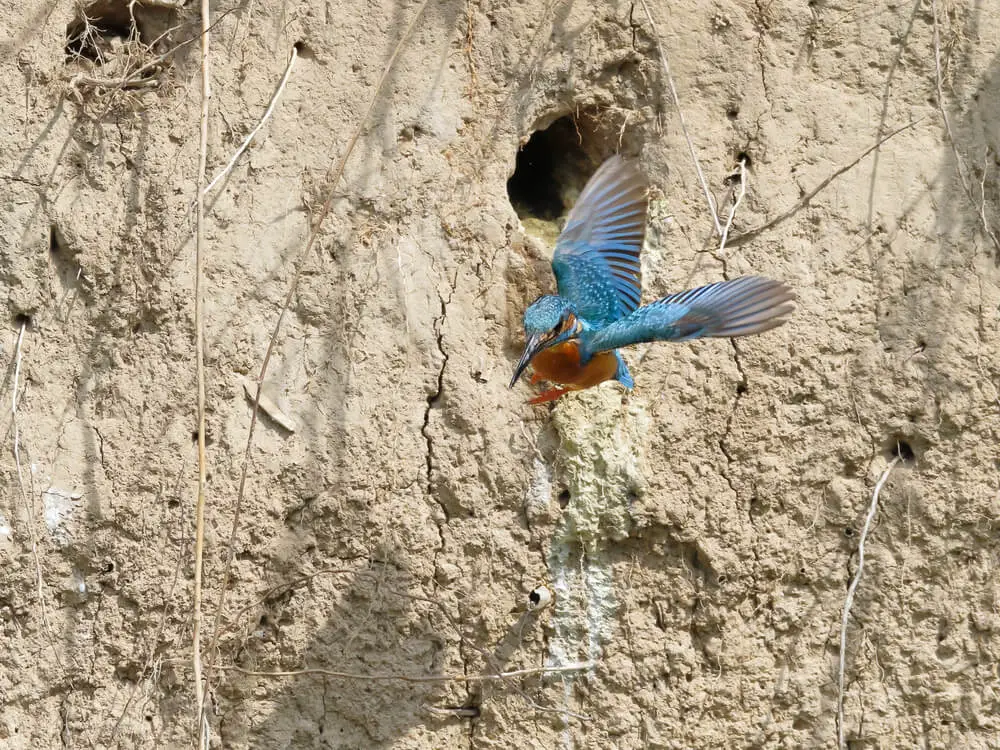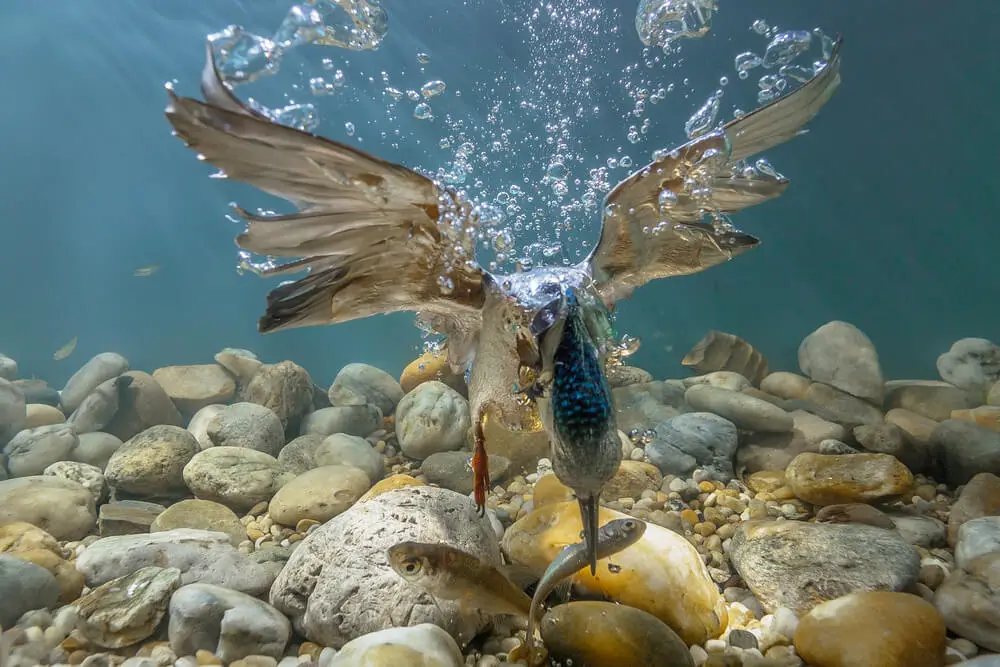Kingfishers are striking birds that choose to live near still or slow-flowing water where they can spend their days hunting for fish.
If you think you should look upwards to spot their nest, think again.
To discover where kingfishers build their nest, you should be searching down low.

The common kingfisher inhabits almost all of the British Isles but is most prevalent in central and southern England.
They choose to build their nests in steep or vertical riverbanks; or other areas of still or slow-running water, such as streams and ponds.
A kingfishers nest is a burrow, consisting of a long tunnel leading down to an oval chamber, where the chicks are raised.
They prefer soft, stone-free soil in a secluded spot, away from possible human and animal predation.
Their ideal nest should have a strong branch or post nearby on which they can perch patiently, waiting to catch a fish.
Table of Contents
When do kingfishers build their nest?
Pairs begin to form around February to give the birds ample time to complete their massive excavation task. Sometimes the male bird begins the dig in the hope of attracting a female; they always work together to complete it.
The pair often share the territory through summer, and the male also attempts to defend it in winter. He knows that losing his territory leads to conflict as he tries to take another.
How do Kingfishers Build their Nest
When the kingfisher has a nesting site in mind, the male must first test the soil and its consistency.
He does this by flying head-first at the bank, his long pointy beak jabs the soil. He continues until he’s happy and formed a ledge just big enough to perch on.
The digging can now begin in earnest; the male and female take it in turns to channel out their narrow tunnel. It is only 6cm wide, a little wider than an individual kingfisher’s body, so only one bird can work at a time.
When it’s time to change places, the worker bird has to shuffle out backwards; there is not even enough room to turn around. Their tiny feet kick the loose soil towards the entrance as they move.
The tunnel is at least 1m long; it takes up to 2-weeks of hard graft to complete. When the birds are far enough into the riverbank, they dig out an oval chamber just big enough to hold 7-eggs. It is angled slightly downwards to prevent eggs from rolling out and predators from getting in.

Do kingfishers line their nests?
Kingfishers don’t gather lining material like many other garden birds. Instead, they regurgitate indigestible food such as fish bones and add that to the nest’s walls.
The mud is already compacted and therefore smooth; combined with the body heat of the adults, it is warm enough to successfully incubate the eggs.
Do kingfishers reuse their nests?
Breeding pairs of kingfishers have 2 or 3 broods each mating season and usually reuse the same nest; there isn’t time to excavate a new one before she lays the next batch of eggs.
Nests are rarely used the following breeding season; for a start, the weather and water may have destroyed them. Also, two broods of seven chicks plus parents will have coughed up fish offal in there for weeks; it isn’t the most desirable place to call home!
Final thoughts
Kingfishers are show-offs, and rightly so. Their meticulous nest building skills are a breath-taking feat of engineering.
Male’s enjoy starting the excavation process alone; they hope to impress a female enough to want to be his mate.
Now that you know where kingfishers nest, the next time you’re wandering along a riverbank and see a hole, wait a while. You might be rewarded with the sight of a stunning kingfisher on the way to hunt for food.
